If anyone knows how to warm up a winter, it’s a Nordic filmmaker. Proof is in store for Los Angeles in January. Spanning two weekends (Jan. 5-6 and 12-13) at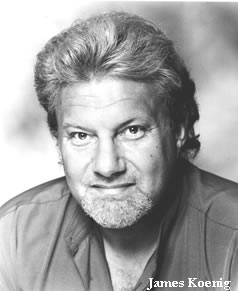 the Writers Guild Theater in Beverly Hills (135 S. Doheny at Wilshire), the Scandinavian Film Festival L.A. will be bigger than ever this year, showcasing twelve new features from Denmark, Finland, Iceland, Norway, and Sweden. The festival gives the Southland the rare chance to see Scandinavia’s Academy Award contenders and other recent feature films, high-ranked shorts, and documentaries from the prolific film industries of the Nordic region.
the Writers Guild Theater in Beverly Hills (135 S. Doheny at Wilshire), the Scandinavian Film Festival L.A. will be bigger than ever this year, showcasing twelve new features from Denmark, Finland, Iceland, Norway, and Sweden. The festival gives the Southland the rare chance to see Scandinavia’s Academy Award contenders and other recent feature films, high-ranked shorts, and documentaries from the prolific film industries of the Nordic region.
I met with the festival Founder and Director, James Koenig, to get a preview of his line-up and an overview of the festival. The weighty canisters of films were being delivered to his door as we spoke, and he was all but shaking the ice off them. “We’ve become known as the place where Nordic film ‘winters in Southern California’,” he told me. “Eager to see the latest in Northern ‘lights, camera, action’, our devoted audience returns each year to see what’s new up on the screen and share in the exchange of fresh work.”
Diane Sippl: Does Scandinavia as a region contribute to world cinema on a very large scale today?
James Koenig: There are around 800 films made in Europe each year, and 80 of those are from the Nordic countries —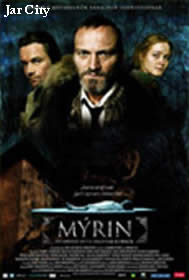 that’s 10% of all European filmmaking today!
that’s 10% of all European filmmaking today!
DS: Are the Academy Awards a key consideration in your programming?
JK: Well, we offer a kind of Nordic ‘weigh-in’ during L.A.’s peak winter film season prior to Oscar nominations. So we show the submissions to the Academy from each of the five countries, and this year they include: The Art of Crying from Denmark; A Man’s Job from Finland; Jar City from Iceland; Gone with the Woman from Norway; and You the Living from Sweden.
DS: A lot of us have a picture in our heads of Scandinavian cinema as fairly heavy and sober — the intimate chamber drama with dark psychological shadows. What genres of cinema can audiences expect to see represented in your films? Are they easy to classify?
JK: Peter Schønau Fog’s The Art of Crying is a quirky domestic drama that has won numerous awards. Gone 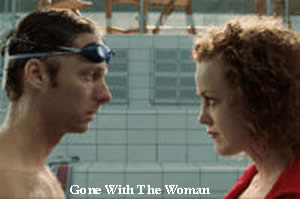 with the Woman by Petter Naess is a light-hearted romantic comedy. Roy Anderson, the director of You the Living, could be called the “Swedish Salvador Dali” of filmmaking. His film is very surreal.
with the Woman by Petter Naess is a light-hearted romantic comedy. Roy Anderson, the director of You the Living, could be called the “Swedish Salvador Dali” of filmmaking. His film is very surreal.
Beyond these submissions for the ‘Best Foreign Language Film’ Oscar, we have quite a sampling of other genres. Our closing film, The New Man, from Sweden by Klaus Härö, is a war-related historical drama. With Your Permission, from Denmark, is music-oriented, about characters staging an opera. Its director, Paprika Steen, also acts in the leading role in Ole Bornedal’s The Substitute, a Danish sci-fi romantic thriller that is often quite funny. A film like this is completely out-of-genre, as are many of the others, actually. They’re not so easy to peg, and that’s part of what keeps the region’s cinema so inventive.
DS: Maybe there are some key themes you’ve noted this season.
JK: Well one large theme seems to prevail: identity — whether it’s cultural (Hisham Zaman’s Winterland and Marius Holst’s Mirush, about Iraqui Kurds and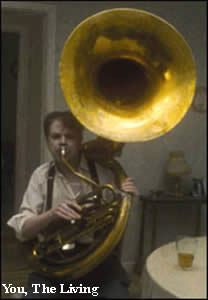 Albanians in Norway, respectively); generational (Life Hits and The Substitute from Denmark and Parents from Iceland); or sexual (The Art of Crying, A Man’s Job, and The New Man).
Albanians in Norway, respectively); generational (Life Hits and The Substitute from Denmark and Parents from Iceland); or sexual (The Art of Crying, A Man’s Job, and The New Man).
DS: Who attends your festival?
JK: Our audience includes everyone from film lovers and Nordic ex-pats to industry professionals and local film students. This year we’ll be introducing several of the filmmakers in person. Swedish-Finn Klaus Härö will be on-hand, as will Petter Naess, whose Elling was nominated for a Foreign Film Oscar in 2000. Director Aleksi Salmenpera will be visiting us from Finland along with the producer and lead actor of his film, A Man’s Job. Also in attendance will be Christian E. Christiansen, whose short film from Denmark, At Night, has been offered for Academy consideration. We’ll show that as well as his first feature, Life Hits.
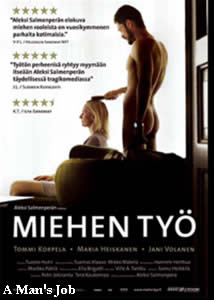 DS: Is the structure of the Nordic film industry comparable to Hollywood’s?
DS: Is the structure of the Nordic film industry comparable to Hollywood’s?
JK: What’s a bit different is that many of the filmmakers are working not only in cinema production but also in television and theater as well, and some of them are very successful making documentaries, music films, and TV commercials in addition to their cinema work. There is a long tradition of wearing many hats, working on various turfs, and entering into international co-productions within the region. And the governments often play a role in funding.
DS: What kinds of exchange do you facilitate through your festival?
JK: The festival has become an important annual occasion for Hollywood to keep up with what’s going on in Nordic filmmaking. Whether working in Europe or the United States, Nordic filmmakers have enjoyed the fertile networking and ‘introduction’ opportunities the festival affords.
DS: Do you have any “success stories” to report?
JK: In fact, yes. When Trygve Diesen came from Norway to study at the University of Southern California, the parent organization of our festival, the American-Scandinavian Foundation of Los Angeles, awarded him with a scholarship. He went on to make the feature film Tyven, Tyven (Hold My Heart), which was Norway’s submission for an Oscar in 2002. He followed that success, after a good amount of work in TV production, with Red, starring Brian Cox and Tom Sizemore, and it will be shown at the 2008 Sundance Film Festival.
was Norway’s submission for an Oscar in 2002. He followed that success, after a good amount of work in TV production, with Red, starring Brian Cox and Tom Sizemore, and it will be shown at the 2008 Sundance Film Festival.
DS: What about the Oscar submissions? Have any of the films you’ve been showing at your festival over the years won the nomination for ‘Best Film in a Foreign Language’?
JK: The answer is yes again! In the eight previous years, our fest-goers have already witnessed a number of Academy Award nominations: Colin Nutley’s Under the Sun (Sweden, 1998); Petter Naess’ Elling (Norway, 2001); Aki Kaurismäki’s The Man without a Past (Finland, 2002); Mikael Håfström’s Evil (Sweden, 2003); and Susanne Bier’s After the Wedding (Denmark, 2006). Who knows what ‘King Oscar’ will give a nod to this year….

